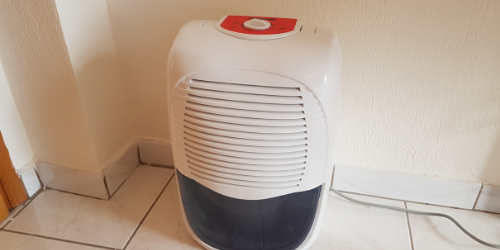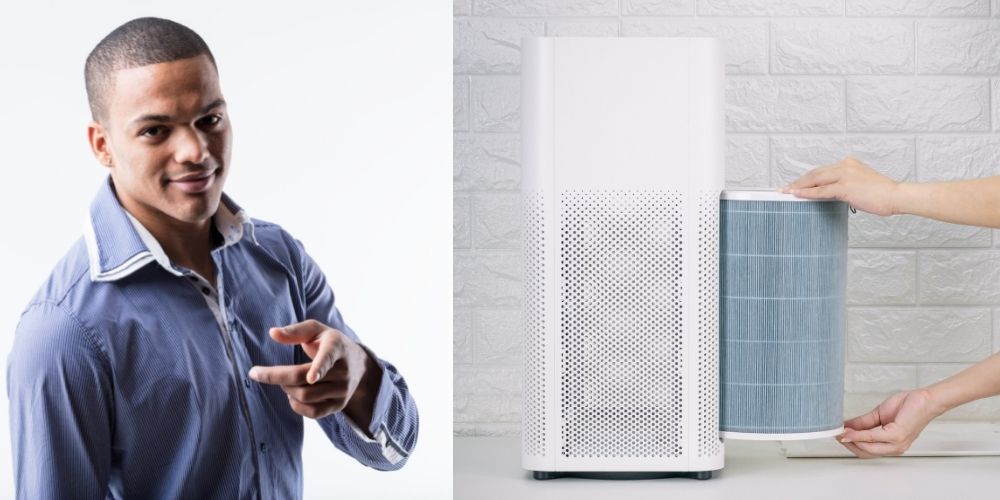Does air purifier cool the room?
Air purifiers recirculate the air after cleaning it of air pollutants such as dust, pet dander, pollen, and other allergens. While their function is not to cool the air, per se, their fans tend to make the air a little cooler. Most air purifiers work like a fan, and when the airflow is directed towards you, the air may feel cooler.
There are some air purifiers that use convection or ionization methods to purify the air. However, only sitting close to the unit may make the air feel cooler. The quantity of air that flows out from an air humidifier will depend on its CADR (clean air delivery rate) rating.
Is air purifier same as air conditioner?

An air purifier is not the same as an air conditioner. All an air purifier does is circulate the air after it has been purified. Air purifiers’ sole purpose is to eliminate particles floating in the air. They improve indoor air quality by removing airborne particles, smoke, germs, and bad odors.
Air conditioners, on the other hand, come with a cooling unit. Air conditioners are not designed to prevent air contamination. Air conditioners cool indoor temperature and help in reducing humidity.
Can air purifiers make the room cold?
Air purifiers neither cool the room nor do they heat it. You can only feel cooler because of the direction of the airflow. Air purifiers with a high CADR may increase the airflow sufficiently to make the room feel cooler. The airflow has two directions – upward and forward.
Upward flow means that the air is flowing from the top. This type of airflow does not provide any cooling effect.
Forward airflow comes from stand-alone purifiers, and the air flows directly towards you, making the breeze feel cooler.
Do air purifiers make the air dry?
Air purifiers only clean the air and do not work like dehumidifiers to reduce excess moisture from the air. Even so, the air might feel dry because of increased forward airflow or cooler air. For instance, if the fan in the air purifier is running too fast, or the size of the room is too small for the air purifier, the air can feel drier.
Since air purifiers are more commonly bought in recent times due to the air pollutants that tend to seep into homes, it is good to understand the indoor humidity levels and choose the unit accordingly. You would not want the humidity levels to go below 30%, as that will make the air too dry.
What Can You Do Instead To Cool Down Your Room?

Having the right indoor temperature increases the comfort levels of a home. For this to happen, you could adopt natural ways of cooling down your room even during the hottest of summers.
The right curtains
Dark-colored curtains can cool down the room considerably, especially if the curtains are closed during the day, preventing the sun from entering the room. Blinds also can be closed during the day.
Ventilation
Keeping the windows and bedroom doors open during the night can bring in some much-wanted breeze into the room and cool it down.
Upgrade light bulbs
Using LED bulbs instead of incandescent, fluorescent bulbs are a good way to bring the temperatures down. Electronic equipment brings in heat. LED lights can reduce that as they stay cool and additionally save on your energy bills.
Ice or cold water in front of the fan
A natural way to bring in cooler air is to place a bowl of cool water or ice in front of the fan. Switching on the fan will blow the coolness into the room. Ideally, the door and windows of the room should be closed so that the coolness stays inside the room.
What is a cool air purifier and which model is the best?
A cool air purifier is one with dual functionality. It purifies the air and cools it, too. The HEPA filter removes 99.97% of allergens and contaminants, including dust, mold spores, bacteria, etc. It can also monitor real-time air quality and enable remote control of the unit to adjust the settings accordingly.
The best cool air purifier is Dyson Pure Cool Link TP02 Wi-Fi Enabled Air Purifier. The Dyson technology offers a cleaner, healthier environment as the units are proven to be great preventers of particles as small as bacteria, in other words, as small as 0.3 microns. The features also include a sleep timer, nighttime mode, and it is easy to clean.
Additionally, this model includes oscillation, ten airspeed settings and will shut off automatically if the unit gets tipped over. There are no fast-spinning blades that may be dangerous for pets and children.
FAQ Section
1. Do air purifiers generate heat?
Air purifiers do not generate heat as they only prevent debris and other particles from entering the rooms. They circulate the air around the indoor space after blocking air pollutants through their HEPA filters. However, like any other appliance, they can get heated during operation. Keeping the units away from direct sunlight or near a furnace would be best.
2. Does an air purifier help with humidity?
An air purifier does not help with humidity as it does not add or remove moisture from the air. They work only to clean the air by stopping elements such as mold spores, pet dander, dust, and other allergens from entering homes.
3. Can you use an air purifier and a fan at the same time?
You can use an air purifier and a fan at the same time because the farmer can’t produce high-speed airflow, and the airflow doesn’t extend too far from the purifier.
However, a fan can be used to spread cooler air throughout the room and bring the temperatures down.
4. Is it good to have an air purifier in your bedroom?
It is good to have an air purifier in your bedroom because it will help you sleep better. Breathing difficulties caused by allergens can disturb sleep leaving you tired and low in energy. Having these elements out of the bedroom air will go a long way to giving you a good night’s sleep.
Wrapping Up
Air purifiers are a boon in today’s environment as the air contains too many pollutants. The air we breathe has become increasingly important to maintain good health and any effort towards improving the indoor air quality is a must.
Therefore, investing in a good air purifier is worth it in the long term for the well-being of you and your family.

About The Author
Olivia — a self-confessed air quality addict — is a home climate enthusiast, fresh air advocate, and someone with deep personal experience and knowledge about mold extermination. Her work was mentioned in countless notable humidity publications. Previously she was an editor at Mold Remediation.
























